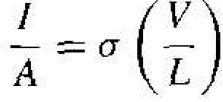
تاريخ الفيزياء

علماء الفيزياء


الفيزياء الكلاسيكية

الميكانيك

الديناميكا الحرارية


الكهربائية والمغناطيسية

الكهربائية

المغناطيسية

الكهرومغناطيسية


علم البصريات

تاريخ علم البصريات

الضوء

مواضيع عامة في علم البصريات

الصوت


الفيزياء الحديثة


النظرية النسبية

النظرية النسبية الخاصة

النظرية النسبية العامة

مواضيع عامة في النظرية النسبية

ميكانيكا الكم

الفيزياء الذرية

الفيزياء الجزيئية


الفيزياء النووية

مواضيع عامة في الفيزياء النووية

النشاط الاشعاعي


فيزياء الحالة الصلبة

الموصلات

أشباه الموصلات

العوازل

مواضيع عامة في الفيزياء الصلبة

فيزياء الجوامد


الليزر

أنواع الليزر

بعض تطبيقات الليزر

مواضيع عامة في الليزر


علم الفلك

تاريخ وعلماء علم الفلك

الثقوب السوداء


المجموعة الشمسية

الشمس

كوكب عطارد

كوكب الزهرة

كوكب الأرض

كوكب المريخ

كوكب المشتري

كوكب زحل

كوكب أورانوس

كوكب نبتون

كوكب بلوتو

القمر

كواكب ومواضيع اخرى

مواضيع عامة في علم الفلك

النجوم

البلازما

الألكترونيات

خواص المادة


الطاقة البديلة

الطاقة الشمسية

مواضيع عامة في الطاقة البديلة

المد والجزر

فيزياء الجسيمات


الفيزياء والعلوم الأخرى

الفيزياء الكيميائية

الفيزياء الرياضية

الفيزياء الحيوية

الفيزياء العامة


مواضيع عامة في الفيزياء

تجارب فيزيائية

مصطلحات وتعاريف فيزيائية

وحدات القياس الفيزيائية

طرائف الفيزياء

مواضيع اخرى
Conductivity
المؤلف:
Donald A. Neamen
المصدر:
Semiconductor Physics and Devices
الجزء والصفحة:
p 162
20-5-2017
3349
Conductivity
The drift current density, may be written as
 (1)
(1)
where σ is the conductivity of the semiconductor material. The conductivity is giver in units of (Ω-cm)-1 and is a function of the electron and hole concentrations and mobilities. We have just seen that the mobilities are functions of impurity concentration, conductivity, then is a somewhat complicated function of impurity concentration.
The reciprocal of conductivity is resistivity, which is denoted by ρ and is giver in units of ohm-cm. We can write the formula for resistivity as
 (2)
(2)
Figure 1.1 is a plot of resistivity as a function of impurity concentration in silicon germanium, gallium arsenide, and gallium phosphide at T = 300 K. Obviously, the curves are not linear functions of Nd or Na because of mobility effects.
If we have a bar of semiconductor material as shown in Figure 1.2 with a volt age applied that produces a current I, then we can write
 (3a)
(3a)
and
 (3b)
(3b)

Figure 1.1 Resistivity versus impurity concentration at T = 300 K in (a) silicon and (b) germanium, gallium arsenide, and gallium phosphide.

Figure 1.2 Bar of semiconductor material as a resistor.
We can now rewrite Equation (1) as
 (4)
(4)
or
 (5)
(5)
Equation (3b) is Ohm's law for a semiconductor. The resistance is a function of resistivity, or conductivity, as well as the geometry of the semiconductor.
If we consider. for example, a p-type semiconductor with an acceptor doping Na(Nd = 0) in which Na >> ni , and if we assume that the electron and hole mobilities are of the same order of magnitude, then the conductivity becomes
 (6)
(6)
If we also assume complete ionization, then Equation (6) becomes
 (7)
(7)
The conductivity and resistivity of an extrinsic semiconductor are a function primarily of the majority carrier parameters.
We may plot the carrier concentration and conductivity of a semiconductor as a function of temperature for a particular doping concentration. Figure 1.3 shows the electron concentration and conductivity of silicon as a function of inverse temperature for the case when Nd = 1015 cm-3. In the midtemperature range, or extrinsic range, as shown, we have complete ionization-the electron concentration remains essentially constant. However, the mobility is a function of temperature so the conductivity

Figure 1.3 Electron concentration and conductivity versus inverse temperature for silicon.
varies with temperature in this range. At higher temperatures, the intrinsic cattier concentration increases and begins to dominate the electron concentration as well as the conductivity. In the lower temperature range, freeze-out begins to occur; the electron concentration and conductivity decrease with decreasing temperature.
For an intrinsic material, the conductivity can be written as
 (8)
(8)
The concentrations of electrons and holes are equal in an intrinsic semiconductor, so the intrinsic conductivity includes both the electron and hole mobility. Since, in general, the electron and hole mobilities are not equal, the intrinsic conductivity is not the minimum value possible at a given temperature.
 الاكثر قراءة في مواضيع عامة في الفيزياء الصلبة
الاكثر قراءة في مواضيع عامة في الفيزياء الصلبة
 اخر الاخبار
اخر الاخبار
اخبار العتبة العباسية المقدسة

الآخبار الصحية















 قسم الشؤون الفكرية يصدر كتاباً يوثق تاريخ السدانة في العتبة العباسية المقدسة
قسم الشؤون الفكرية يصدر كتاباً يوثق تاريخ السدانة في العتبة العباسية المقدسة "المهمة".. إصدار قصصي يوثّق القصص الفائزة في مسابقة فتوى الدفاع المقدسة للقصة القصيرة
"المهمة".. إصدار قصصي يوثّق القصص الفائزة في مسابقة فتوى الدفاع المقدسة للقصة القصيرة (نوافذ).. إصدار أدبي يوثق القصص الفائزة في مسابقة الإمام العسكري (عليه السلام)
(نوافذ).. إصدار أدبي يوثق القصص الفائزة في مسابقة الإمام العسكري (عليه السلام)


















